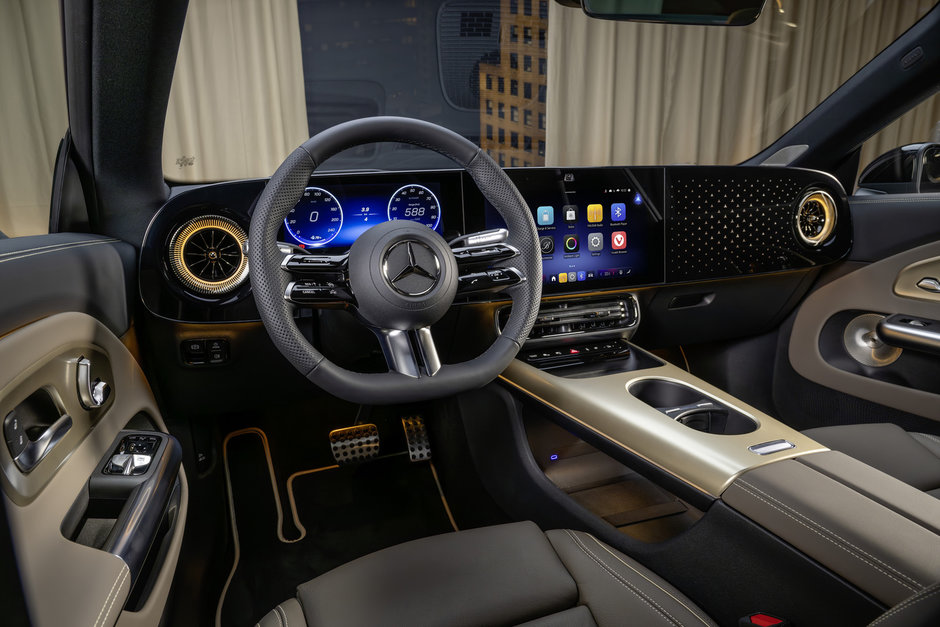Five Warning Lights You Need to Know About Your Mercedes-Benz
April 25 2025,

Driving a Mercedes-Benz puts you behind the wheel of German engineering excellence, but even the finest vehicles alert their owners when attention is required. Your Mercedes-Benz dashboard contains a sophisticated monitoring system designed to communicate important information about your vehicle's health through various warning lights and symbols.
Understanding these warning lights can mean the difference between a simple maintenance visit and a costly repair. Each illuminated symbol serves a specific purpose, communicating precise information about different vehicle systems. Recognizing these signals allows you to take appropriate action quickly to protect your investment and ensure your safety on Canadian roads.
The Check Engine Light: Your First Alert
The check engine light—typically appearing as an engine outline or the words "Check Engine"—is one of the most common yet important indicators in your Mercedes-Benz. When illuminated, it signals that the onboard diagnostic system has detected an issue affecting engine performance or emissions. This light can activate for numerous reasons, ranging from something as simple as a loose fuel cap to more complex issues with oxygen sensors, catalytic converters, or ignition systems.
If this light comes on and remains steady, you should schedule a service appointment soon. However, if the light flashes, this indicates a potentially severe problem that could damage your powertrain and related components. In this case, reduce your speed, minimize engine load by avoiding steep inclines or towing, and have your vehicle inspected immediately.
The Mercedes-Benz diagnostic system stores specific trouble codes that technicians can retrieve using specialized equipment, pinpointing exactly what triggered the warning.
Brake System Warning: A Critical Safety Signal
The brake warning light in your Mercedes-Benz appears as a circular symbol with an exclamation mark or the word "BRAKE." This light demands immediate attention as it directly affects your vehicle's stopping ability. When illuminated, it might indicate low brake fluid levels, worn brake pads, or issues with the anti-lock braking system (ABS).
If this warning appears while driving, first check if your parking brake is fully released. If the light remains on, assess if the brake pedal feels different—softer, lower to the floor, or requiring more pressure than usual. These symptoms, paired with the warning light, suggest immediate professional attention is needed.
For your safety, avoid driving with an active brake warning light. If necessary, carefully proceed to the nearest safe location and arrange for vehicle towing rather than risking brake failure.
Coolant Temperature Warning: Preventing Engine Damage
The coolant temperature warning light, typically red and showing a thermometer in liquid, indicates your engine is overheating. This situation requires immediate action to prevent serious engine damage. When this light activates, your Mercedes-Benz is warning you that coolant levels are low or there's an issue with the cooling system.
If this warning appears, safely pull over as soon as possible and turn off the engine. Allow sufficient time for the engine to cool before checking coolant levels. Low coolant should be addressed with the proper Mercedes-Benz approved coolant. Never open the coolant reservoir cap while the engine is hot, as the pressurized system can cause severe burns.
Persistent cooling system issues might indicate a failing water pump, damaged radiator, leaking hoses, or a malfunctioning thermostat—all requiring professional diagnosis and repair.
Oil Pressure Warning: Your Engine's Lifeline
The oil pressure warning light—resembling an oil can or lamp—signals potentially serious issues with your engine's lubrication system. Oil is crucial for reducing friction between moving engine components, and insufficient oil pressure can lead to catastrophic engine damage within minutes.
If this light illuminates while driving, it's essential to stop as soon as safely possible and turn off the engine. Check the oil level using the dipstick after waiting for a few minutes to allow oil to settle in the pan. If the level is low, adding the manufacturer-recommended oil may resolve the issue temporarily, but a proper inspection is still necessary.
Even with adequate oil levels, an illuminated pressure warning might indicate a failing oil pump, clogged oil filter, or internal engine problems. In these cases, having your Mercedes-Benz towed to a service centre is the most prudent course of action.
Battery/Charging System Warning: Electrical System Alert
The battery warning light appears as a battery symbol and indicates potential issues with your vehicle's electrical charging system. This system, comprised of the battery, alternator, and related wiring, powers everything from engine starting to infotainment systems in your Mercedes-Benz.
When this light comes on while driving, your vehicle is running solely on battery power, which will eventually deplete. You may notice dimming headlights, weakening power windows, or faltering climate control as electrical systems lose power. If possible, turn off non-essential electrical components to conserve battery life.
This warning often points to a failing alternator, loose/damaged belt, corroded battery connections, or a dying battery. Having the charging system tested promptly will prevent being stranded with a vehicle that won't start.
Staying Ahead of Vehicle Troubles Through Proper Maintenance
Understanding the warning lights in your Mercedes-Benz empowers you to respond appropriately to potential problems before they escalate into major repairs. Regular maintenance according to the manufacturer's recommended schedule is the best way to prevent many of these warning lights from appearing in the first place.
Mercedes-Benz Blainville's factory-trained technicians have the expertise and specialized diagnostic equipment to interpret warning lights accurately and implement the proper solutions for your specific model. Contact our service department today to schedule a comprehensive vehicle health check and ensure your Mercedes-Benz continues to deliver the performance and reliability you expect.





